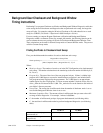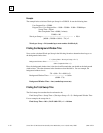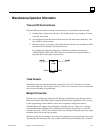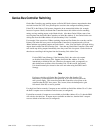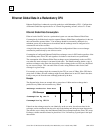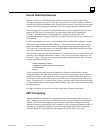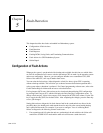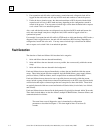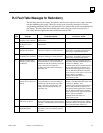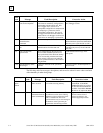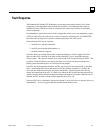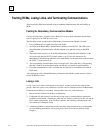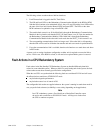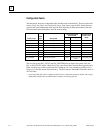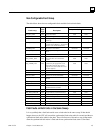
5-2 Series 90™-70 Enhanced Hot Standby CPU Redundancy User's Guide
–
May 2000 GFK-1527A
5
2
.
If an expansion rack fails after a unit becomes a stand-alone unit, a diagnostic fault will be
logged on that unit but the unit will stay in RUN mode and continue to control the process.
3
.
If after the above situation occurs, the other unit transitions to RUN, the unit with the failed
expansion rack will stay in RUN mode and may, depending on the configuration, remain in
control of the process. You may want to include logic to shut down the faulted unit or request
a role switch if this is an undesired operation.
Also, a unit with the fault actions set to diagnostic may be placed in RUN mode and become the
active unit even though it may have a diagnostic fault, which would be logged as fatal in a
synchronized system.
For example, if an expansion rack fails while in STOP mode or while transitioning to RUN mode, a
diagnostic fault is logged; however, the unit will still transition to RUN and may, depending on
configuration, become the active unit. You may want to include logic to shut down the faulted
unit or request a role switch if this is an undesired operation.
Fault Detection
The detection of faults and failures falls into three basic categories:
1. faults and failures that are detected immediately
2. faults and failures that are detected as soon as possible, but not necessarily within the current
sweep
3. faults and failures that are detected in the background.
Faults and failures that are detected immediately are those that are identified within the current
sweep. These faults include I/O data corruption, single bit RAM failures, power supply failures,
processor failures, VME bus failures, and no response from an addressed VME module.
Faults and failures that are detected as soon as possible, but not necessarily within the current
sweep, include a group of faults that are detected asynchronously to the PLC sweep (Genius faults)
or those faults that require a timeout larger than one sweep time to detect the failure. These faults
are typically detected within one second and include all Genius faults (circuit faults, loss of block,
and so forth).
Faults and failures that are detected in the background will typically be detected within 30 seconds.
These faults include address or data line failures, multiple bit RAM failures, firmware failures, and
communication device failures.
Note
The actual time to run all diagnostics tests is determined by configuration
parameters as described in Chapter 4. This time might be more or less than 30
seconds.



